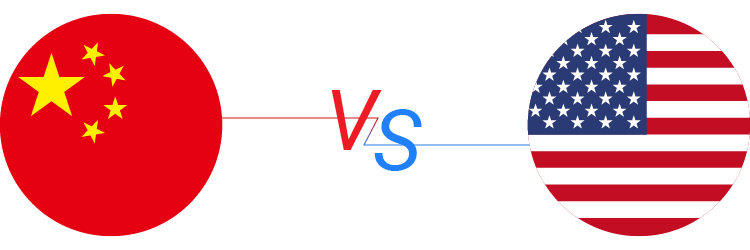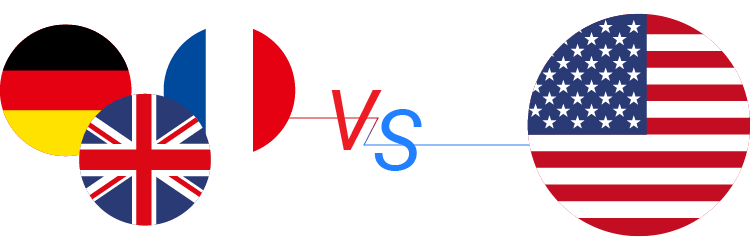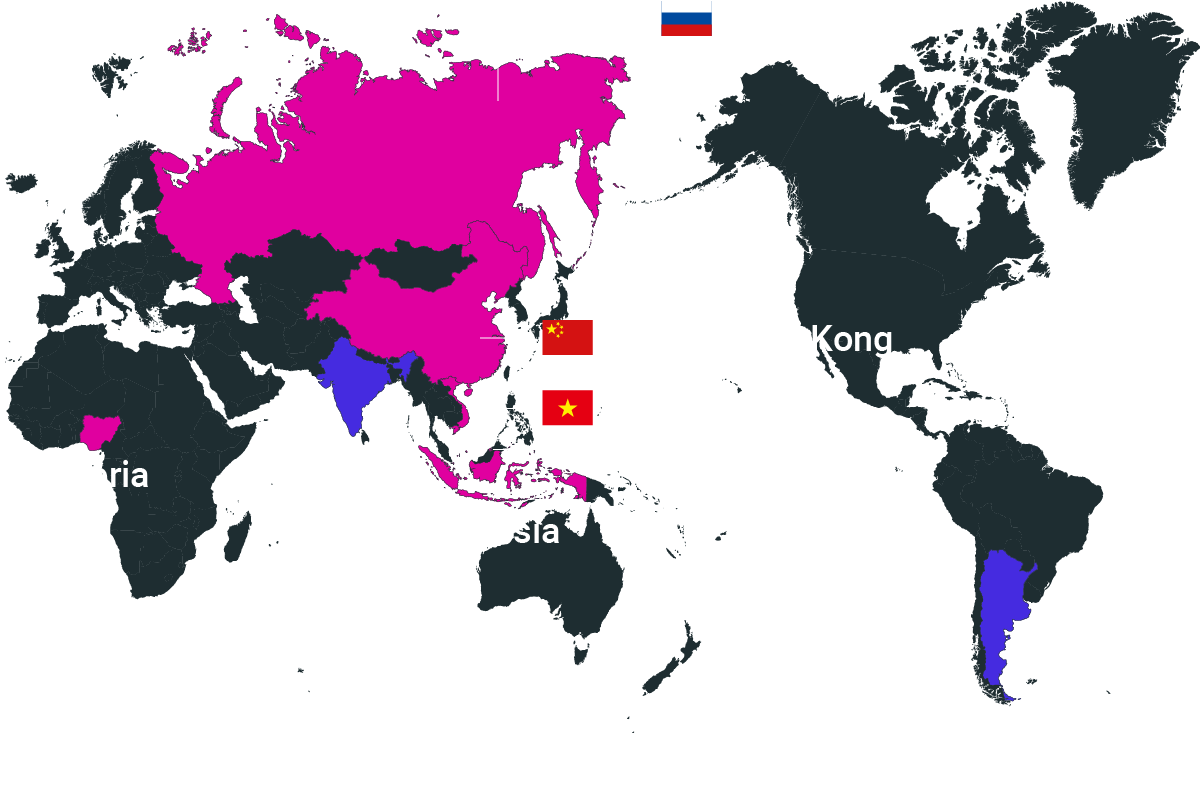Divided internet
China and US
switch places as data powerhouse
The internet, a technology that was supposed to bring the world together, has deep fissures running through it. With worsening international relations, national borders have started to delay the spread of information. With the term “splinternet” entering the common lexicon to describe the fragmentation of the internet, Nikkei set out to map global power structures based on data.
China as the new data champion
Nikkei’s Data Economy Research Team analyzed the quantity of cross-border data flows in major countries and regions to determine who has most of the world’s data. China emerged as the world’s “information champion,” overwhelming even the U.S.
Countries with
the most cross-border data
Countries with
the most cross-border data
Trends in
countries’ cross-border data
Trends in
countries’ cross-border data
Trends in
countries’ cross-border data
Trends in
countries’ cross-border data
China’s data is double that of the U.S.
China had the most cross-border data in 2019. The Chinese mainland and Hong Kong, the telecommunications gateway to the mainland, together account for 23% of all of the world’s data (about 485.66 million Mbps). That is about twice the size of the data in the U.S.
The U.S.’ time in the top spot is in the past
In 2001, the dawn of the internet age, the U.S. was top country when it came to data. European countries and Japan also held some of the top spots, but the rankings now are dramatically different. India and Singapore surged ahead, while Japan sank to the bottom position.
Disparities in data growth
All countries have seen dramatic increases in cross-border data since 2010. The change in rankings reflects differences in these growth rates.
China kept in hot pursuit of the U.S., surpassing it in 2014.
The difference in momentum between China and the U.S. was clear. China experienced a 7,500-time increase in its cross-border data between 2001 and 2019, compared with the U.S.’ 219-time increase.
Cross-border data in emerging countries also experienced tremendous growth. These countries “leapfrogged” to the latest technologies, such as mobiles payments and high-speed communications. Japan’s cross-border data was only 225 times larger in 2019, and it was overtaken by Singapore and Vietnam in the ranking.
The three poles of data power
The changes in global data distribution are not limited to the amount of data in each country. Countries are now exchanging more data with different partners. A detailed analysis reveals a tri-polar information power structure consisting of China, Europe and the U.S.
Destination country of cross-border data transmission from the U.S.
- China/Hong Kong
- Japan
- U.K./France/Germany
- Russia
- Singapore/Vietnam
- India
- Brazil
Destination country of cross-border data transmission from China/Hong Kong
- U.S.
- Japan
- U.K./France/Germany
- Russia
- Singapore/Vietnam
- India
Destination country of cross-border data transmission from Russia
- U.S.
- China/Hong Kong
- Japan
- U.K./France/Germany
- Singapore/Vietnam
Destination country of cross-border data transmission from India
- U.S.
- China/Hong Kong
- Japan
- U.K./France/Germany
- Singapore/Vietnam
The U.S.’ shrinking information sphere
The U.S. used to exchange 40% of its cross-border data with the U.K., Germany and France, overwhelming other countries with its capacity to handle information. It has now fallen to second place in the ranking, and its information sphere is now more centered on Brazil and other countries in the Americas. The decline of its global impact is undeniable.
China’s spreading data power in Asia
China, the new data champion, has expanded its information sphere to Southeast Asia. This is a total change from 2001, when most of its cross-border data was shared with the U.S. and Japan. With more Chinese companies moving into the region, the flow of data to and from Singapore and Vietnam increased rapidly.
Russia and India closing on Europe
Growth in cross-border data in India and Russia has them approaching the same level as Europe. Russia’s cross-border data has increased by more than 1,900 times since 2001, with 33% of it being shared with the U.K., France and Germany.
India, which has seen a more than 20,000-time increase in its cross-border data, accounts for 44% of all interactions with those three European countries.
Europe is set to strengthen its ties with these emerging countries in the data field and form a third information sphere along those of the U.S. and China.
Friction and division
The three information spheres -- those of China, Europe and the U.S. -- are locked in a fierce competition for data. Some emerging countries are tightening their regulations to close off their data. Friction and division over data, now a new resource, could disrupt the global flow of information.
Escalating data friction between China and the U.S.
Confrontation between China and the U.S. has become more intense under the Trump administration. The U.S. has moved to exclude Chinese companies from the information and communications and cloud services sectors. It recently put heavy pressure on TikTok, the Chinese video sharing app.
China too has shut the internet services of the U.S.-based IT giants out of its domestic market. With its notion of a global standard for data management that it put forward in 2020, it is now poised to replace the U.S. as the leader of the global data economy.
Cutting off U.S. internet services like Google and Facebook


Putting pressure on Chinese internet services like TikTok and WeChat
Confrontation between Europe and the U.S. over personal data
There are also cracks between Europe and the U.S. The Court of Justice of the European Union ruled in 2020 that U.S. data protection rules are inadequate, and the framework for sending personal data from Europe to the U.S. is “invalid.” Data flows between the U.S. and Europe may taper off.
The European Court of Justice ruled that U.S. data protection rules are inadequate; the framework for transferring personal data from Europe is invalid.


U.S. Secretary of Commerce Wilbur Ross said he was "deeply disappointed" with the European stance. The Cross-Border Privacy Rule (CBPR), a framework for data distribution with Japan, Australia and other countries, is being promoted without Europe.
Countries containing the data
The "data localization" in which countries contain data within themselves is spreading especially in emerging countries. In addition to China and Russia, Southeast Asian countries and India have developed laws and regulations that require companies to set up servers in the country. They require data to be stored domestically and severely restrict the taking of data out of the country.
It could be an obstacle to the global distribution of data, and major companies are protesting that it will stifle their business.
- Laws in place
- Bills submitted


The data economy is effective provided the abundance of data circulation is available. If the Internet becomes fragmented and clogged with information, the world will lose its vitality. Will we be able to overcome the conflicts between nations and regain the freedom of global connectivity? Humanity is at a crossroads.
